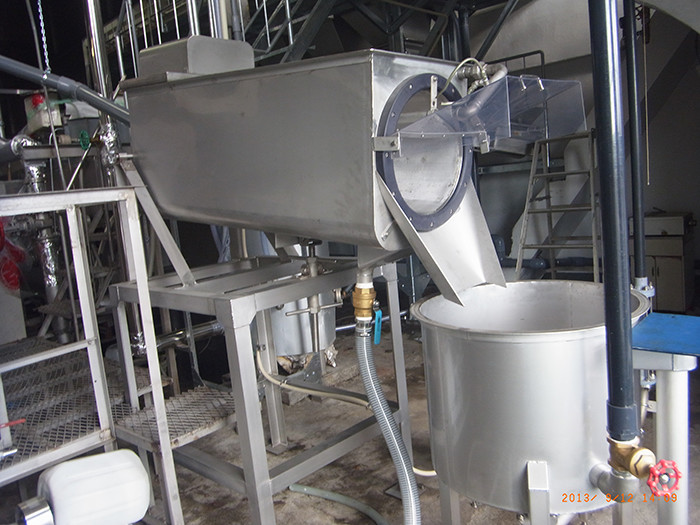Sen-mai-ki
- 【English】
- Rice washing machine, rice-washing machinery
- 【Japanese】
- 洗米機
Rice is washed (sen-mai) in order to remove rice powder adhering to the rice grains, and this task used to be carried out by hand (or by foot). Rice washing machinery came into use around 1920 and can be divided into three broad groups.
- Rice which has been put in a hopper is moved together with water as it rotates in a screw conveyor and washed by shower when it reaches the top. This method has the disadvantage of the occurrence of cracked grains due to friction.
- Water and rice are stirred into a mixing tank, then transported using a slurry or rotary pump, washing and transporting the rice simultaneously. A separator to divide the rice and the water is necessary. Compared to the previous method, this requires more water, and some producers re-use the water after it has passed through the separator.
- The rice is exposed to a mixed-air jet comprised of mixed flows of water and air bubbles to wash off the rice powder. This method is said to result in less cracking, and requires a separator as for 2.

sen-mai-ki

